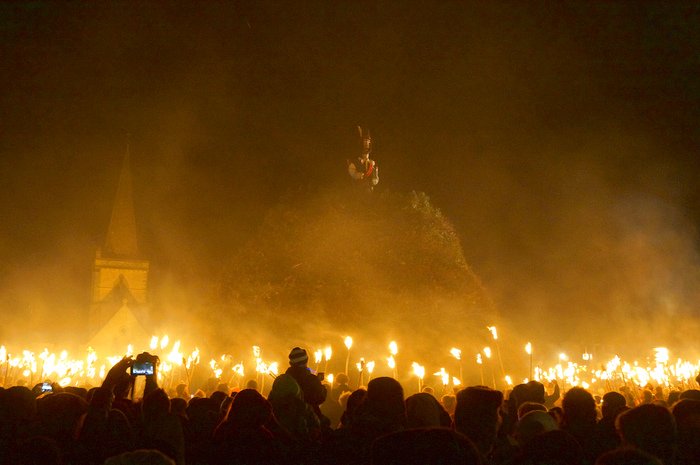I mentioned earlier that my nineteenth century family were Rechabites and pyromaniacs. They were farmers also and while not religiously opposed to mechanical devices, owned none. There was no electricity in the house, the cows were milked by hand and in the twentieth century, a neighbour’s truck took the goods to market.
It may not sound like there was a lot of fun in this teetotalling, candlelit existence but we did enjoy a good burning.
In fact, introducing the self-proclaimed original temperance society, I told of a liquor salesmen being run out of town without his takings, tools of the trade or stock. As a friendly society, the Independent Order of Rechabites was fairly fierce. My Uncle broke his son’s hand with a strap and denied him medical attention. “Stop whimpering boy. You got what you deserved.” Luckily the cricket coach slid him into the doctors when Thomas Payne the third was up a cherry tree, pickin’.
Every November, we had a huge bonfire. The trees that had been ringbarked to make room for the farm were gradually being knocked over or burned out. So Pa and Tom, the child beater, would drag fallen logs and branches around the next tree to be burned out of the ground, piling them up as a pyre, the height of two or three humans.
Guy Fawkes night was big business indeed.
With lots of fireworks.
Up until health and safety became a thing, the fifth of November was cracker night. Across the Empire.
To make sure the night would go off with a bang, my Pa would take an old chaff sack, stuff a pound of gunpowder into the corner and then wrap it tightly with hemp rope. That not so little bomb would be the head of the effigy of Guy Fawkes. The effigy would be mounted at the top of the pyre, roped to the tree that was to be burned out of the ground. At sunset we would light the fire and a couple of hours later, after we had finished blowing off our thumbs and setting fire to each other’s boots by dropping penny bungers in them, the flames would reach Guy Fawkes and we’d stop our shenanigans to watch him burn.
It was still fashionable to burn Catholics at the time, especially among the Rechabites. The general opinion was if they’re going to drink something flammable, like alcohol, they’re pretty well asking for it.
So the flames would lick the effigy’s feet. Eventually he would catch fire and we’d watch and wait for the head to get so hot it would explode. At that point the tree to which Guy had been tied would be knocked over, broken in half or fatally damaged, the fire would be blown down to a nest of coals and burning logs would be scattered all about. A major piece of farm work had been achieved, our religious prejudices inflamed and a good time had by all.
We’d rush around dragging the red hot wood back into the coals and singing …
It’s hard to imagine in these times of Halloween, religious tolerance and zero tolerance for danger how central that ritual of blowing things up, especially Catholic things, was in Australian culture.
Also how deep the religious wars were. Australia had started to count Catholics in the Census by then but that was kind of inevitable since so many of the convicts shipped off to the other side of the world were political from the Irish troubles, rebels sent away in the name of peace and order. The Australian labour movement was largely Catholic and eventually, formed government of both the colonies and the Commonwealth. Come to think of it, in fact, the current Prime Minister of England had a Catholic wedding in Westminster Cathedral last month. Go figure.
November the 6th was a day of comparing injuries and tall tales of property damage. I think I will have to devote an entire episode of Fashion by Dad to fireworks night. It is sadly missed.
The modern literary mind has remained as enamoured of Fawkes. J.K. Rowling, never shy of turning things upside down, made Fawkes Harry’s saviour. But then Rowling is an exception. In Seventy-Two Virgins, Boris Johnson, that not-so-venerable politician and novelist, turns Fawkes into — no prizes for guessing — an Islamist bomber. But why blame Johnson alone? V for Vendetta, a cult graphic novel of the late 1980s, depicted an anarchist in a Guy Fawkes mask.
https://www.telegraphindia.com/culture/books/guy-fawkes-is-celebrated-even-400-years-after-his-death/cid/1673484

